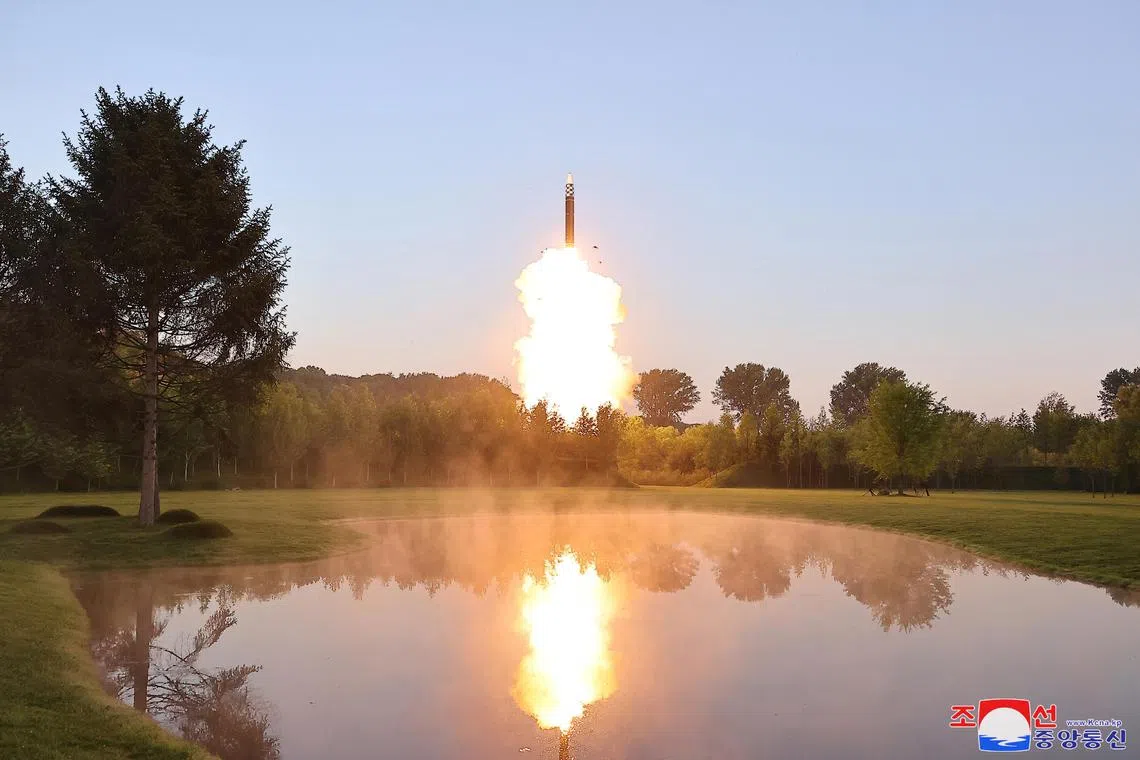North Korea fires two short-range ballistic missiles, one fails
Sign up now: Get ST's newsletters delivered to your inbox

A photo released by North Korea shows a test of the separation and guidance control test of individual mobile warheads at an undisclosed location in North Korea on June 26.
PHOTO: EPA-EFE
Follow topic:
SEOUL – North Korea fired two short-range ballistic missiles on July 1, but one launch failed, South Korea’s military said, a day after Pyongyang warned of “fatal consequences” following major joint exercises in the South.
South Korea’s Joint Chiefs of Staff (JCS) said the military had detected two launches, the first at 5.05am local time (4.05am Singapore time) and the second around 10 minutes later.
“The short-range ballistic missile launched at around 5.05am flew approximately 600km,” it said, adding the second one travelled 120km.
JCS spokesman Lee Sung-jun said the second missile appeared to fly abnormally in an early stage of flight. He added that, if it exploded in mid-air, its trajectory indicates debris could have landed over North Korea.
Seoul’s military has “strengthened surveillance and vigilance in preparation for further launches”, JCS said in a statement.
North Korea is accused of breaching arms control measures by supplying weapons to Russia
Mr Lee declined to comment when asked whether the North’s latest launch could have been a test of missiles intended for delivery to Russia.
The launch also comes after Pyongyang on June 30 denounced joint military exercises by South Korea, Japan and the US, calling them an “Asian version of Nato” and warning of “fatal consequences”.
The three-day Freedom Edge drills, which ran from June 27 to June 29, included preparation in ballistic missile and air defences, anti-submarine warfare and defensive cyber training.
They also involved Washington’s nuclear-powered aircraft carrier USS Theodore Roosevelt, Tokyo’s guided-missile destroyer JS Atago and Seoul’s KF-16 fighter jet.
Pyongyang has always decried similar combined exercises as rehearsals for an invasion, but Seoul defended the latest exercises, saying they were a continuation of defensive drills held regularly for years.
Testing, testing
Last week, North Korea claimed to have successfully tested a multiple warhead missile, but the South said that launch ended in a mid-air explosion
Relations between the two Koreas are at one of their lowest points in years, with the North ramping up weapons testing while bombarding the South with balloons full of trash
Pyongyang says those missives are in retaliation for balloons loaded with anti-regime propaganda leaflets sent northwards by activists
In response to the North’s repeated launches, South Korea has fully suspended a tension-reducing military treaty
North Korea is also currently holding a major party meeting, which was opened by Mr Kim, state media said on June 29.
“In both North Korean politics and military policy, the best defence is often a good offence,” Professor Leif-Eric Easley from Ewha University in Seoul said.
“These missile launches are likely the Kim regime’s way of compensating for recent failed tests, aiming to impress a domestic audience during ruling party meetings.”
“Pyongyang is also determined not to appear weak while South Korea conducts defence exercises with Japan and the United States.” AFP

